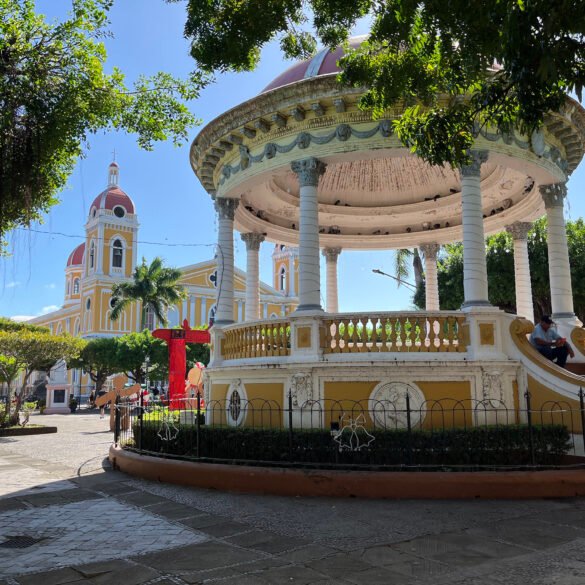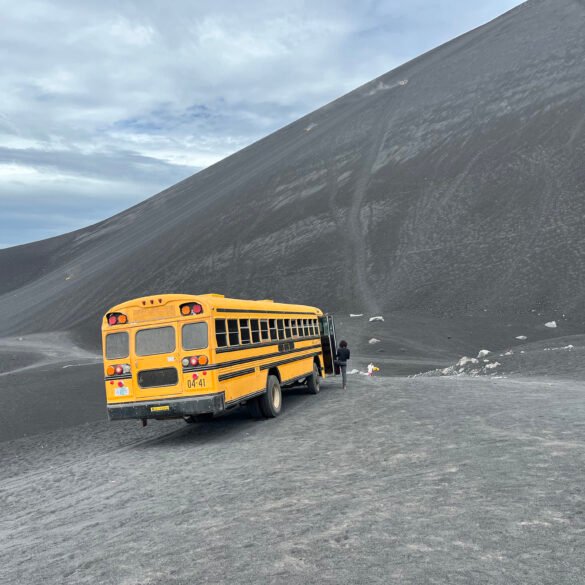One week after visiting Granada, we drove into its long-time rival - Leon. Like Granada, Leon is set in a breathtaking location. Approaching the city from the north, we counted at least six volcanoes on the horizon, all part of the Cordillera de Maribios. As we got closer to the city, it became obvious that there is no better place to explain the geography of Central America than here. We visited Central American volcanoes in the past, in Guatemala and El Salvador, but only when we reached Leon did we have this excellent visual aid of volcanoes following a straight line of the Central American Volcanic Arc. It was incredible to see one volcano after another, perfectly aligned, following the dividing line of tectonic plates. Volcano Momotombo — the Nicaraguan Mount Fuji that inspired so many artists and poets with its perfectly shaped cone — was spewing a cloud of smoke and was the most dramatic of its volcano siblings. We also easily recognized San Cristobal, the tallest volcano in Nicaragua, whose image we saw on ubiquitous Flor de Caña rum bottles.
As many friendly Nicaraguans warned us, Leon met us with sweltering heat. The temperature was in the 90s, and we were wilting under the scorching sun. It reminded us of our time in La Union, El Salvador three years prior, when we met an American girl who was so overwhelmed by the heat that she was loudly threatening to quit the family trip and go home. Throughout the day, we had to be very strategic about moving around Leon, always choosing a shaded side of the street and taking frequent breaks from the heat in churches, stores, and cafes.
If Granada’s colonial center is postcard-pretty and maybe a little bit too sterile, Leon has a rougher and grittier appearance. The colonial streets are not as nice, and the facades of buildings are somewhat dilapidated and crumbling but with their charm. If Granada resembles Cuba’s Trinidad, Leon certainly has Old Havana’s vibe. The chaotic and busy market by the Leon Cathedral only further adds authenticity to this slightly disheveled city - a charm not even the presence of a fancy McDonald’s across the street can diminish.
Being the second largest city in the country after Managua and twice as big as Granada, Leon doesn't primarily cater to the tourism sector, and we didn't find it to be too touristy. We also detected that Leon attracts slightly different types of visitors than Granada. In Granada, we saw not just independent travelers but also vacationing families with little kids; in Leon, it was mainly backpackers staying in hostels and preparing for or recovering from volcano boarding and volcano hiking (more about these activities in the next posts).
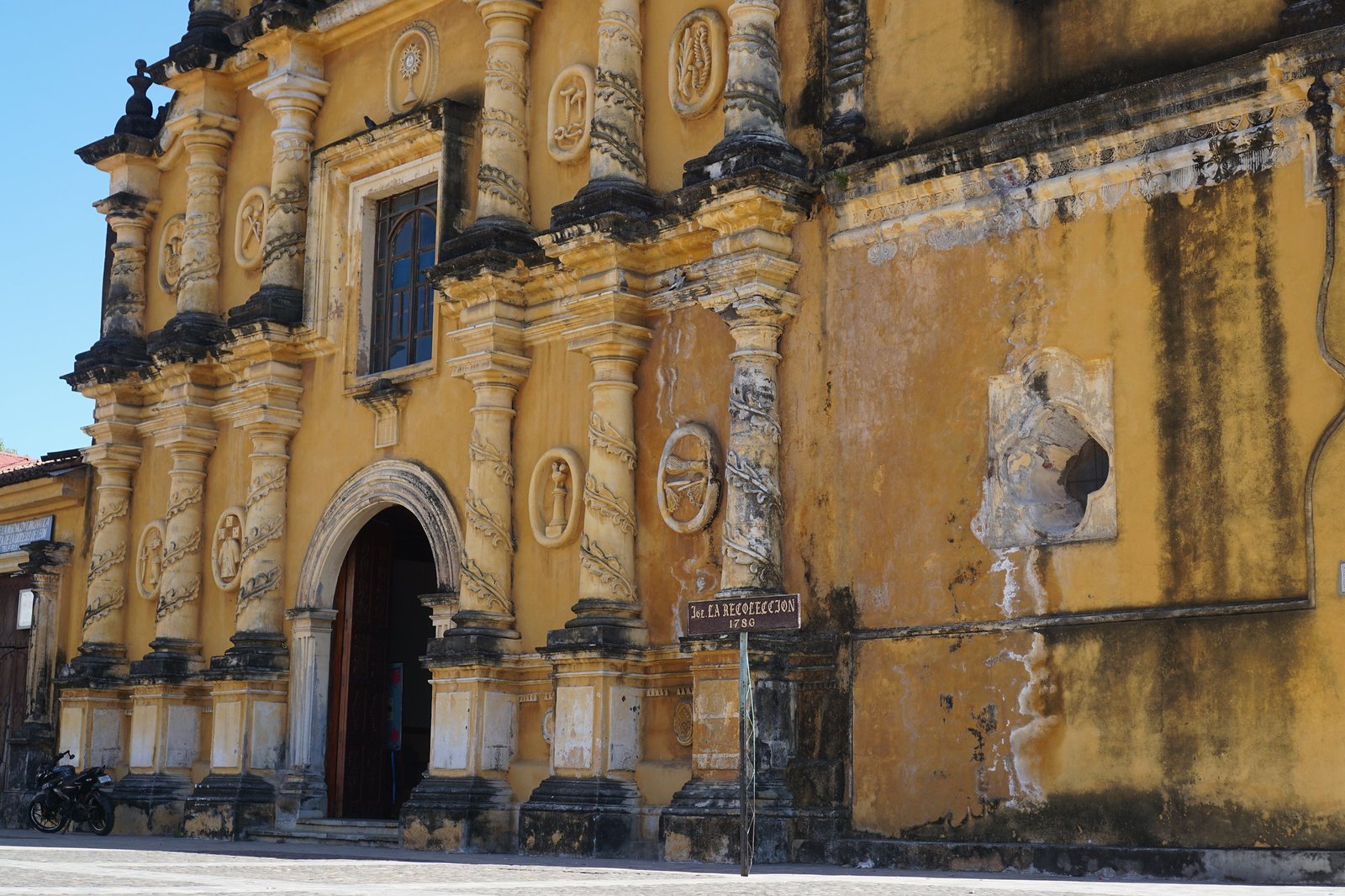
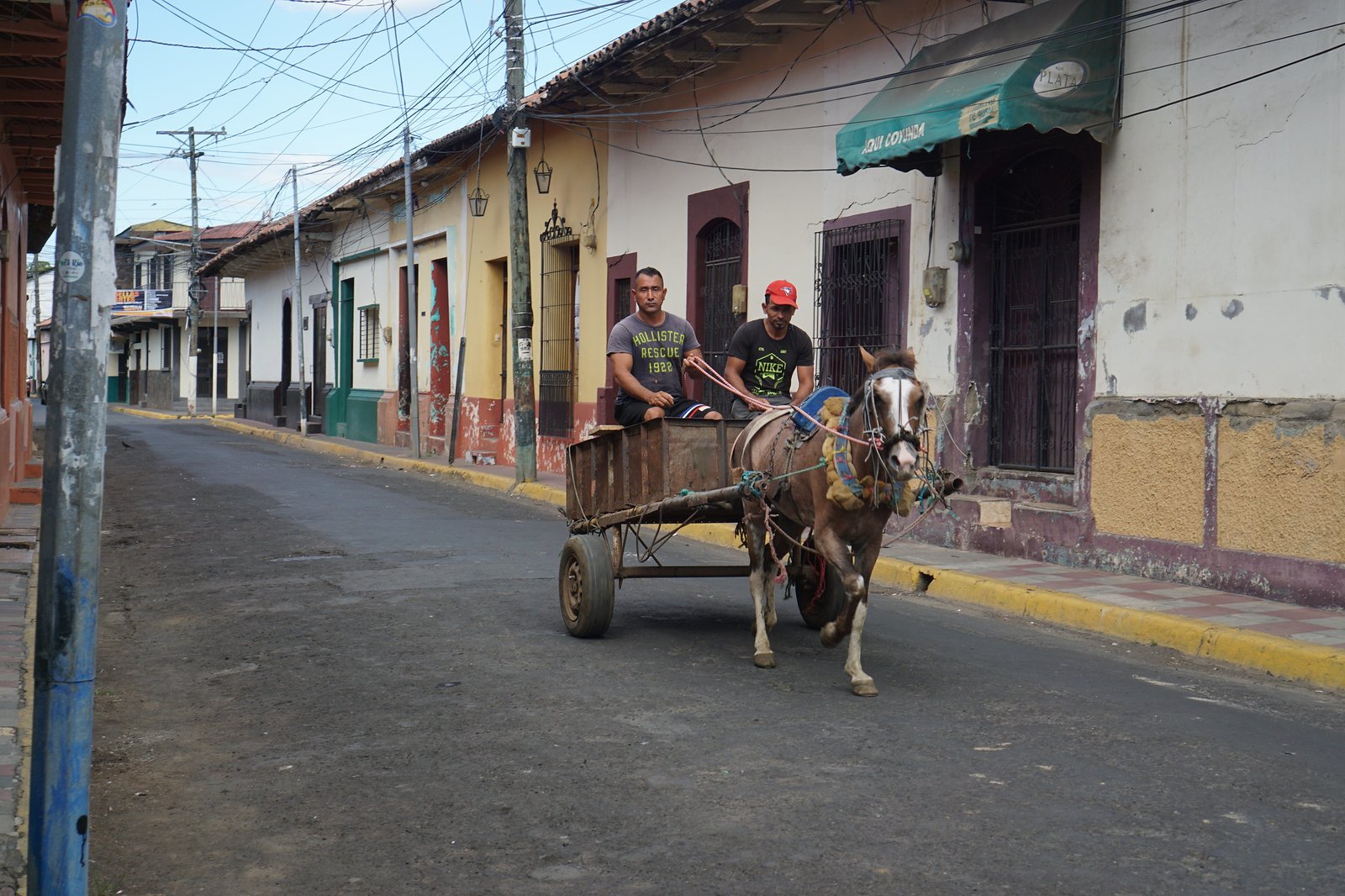
The fascinating part of exploring Leon, although a bit emotionally challenging, was learning about its turbulent history. Home to the oldest university in the country, Leon has always been a hotbed of political activity and leaning to the left. The city was an epicenter of fighting by the members of the Sandinista National Liberation Front (“FSLN”) against the CIA-sponsored Somoza dynasty and Guardia Nacional. The Somoza regime was eventually toppled in 1979 but not without a heavy price. Leon’s central park and surrounding streets are filled with plaques and monuments remembering those who lost their lives fighting dictatorship and oppression (mostly young people, some barely in their teens). Abundant street art also reflects turning moments in Leon’s history, including Guardia Nacional opening fire on a peaceful student march on July 23, 1959, killing four students.
For those who want to learn more about the struggle and ultimate triumph of the Sandinista revolution, the Museum of Revolution staffed by former FSLN fighters is located right across from the Leon Cathedral. We chose not to visit it because reading many biographies of people killed by the Somoza regime outside of the museum alone was more than enough for us. The experience reminded us of the Museum of the American War in Ho Chi Minh City when the outside heat and overwhelming volume of information about death, destruction, and human suffering made our day quite depressing and miserable.
The main attraction in Leon is, without a doubt, its colossal cathedral, a UNESCO World Heritage site. The imposing building, with a white-sparkling exterior, dominates the central square. It's so enormous that we repeatedly struggled to get it fully into a picture frame. The cathedral’s interior is quite simple, but it contains something very important to every Nicaraguan - the grave of Ruben Dario. After traveling around the country, we can confidently say that there is no bigger name in Nicaragua than Ruben Dario (August Cesar Sandino probably comes in close second). Every city, town, or village has either a street or a park named after this famous Nicaraguan poet. Known as the father of modernism, he kickstarted Nicaragua’s reputation as a nation of poets and became one of the most recognized Nicaraguans outside of the country. His grave is guarded by a marble statue of a solemn lion, a symbol of the city, where Dario spent his formative years and where he died at the age of 49. The grave of another famous poet from Leon, Alfonso Cortés, is right across from Dario’s grave.
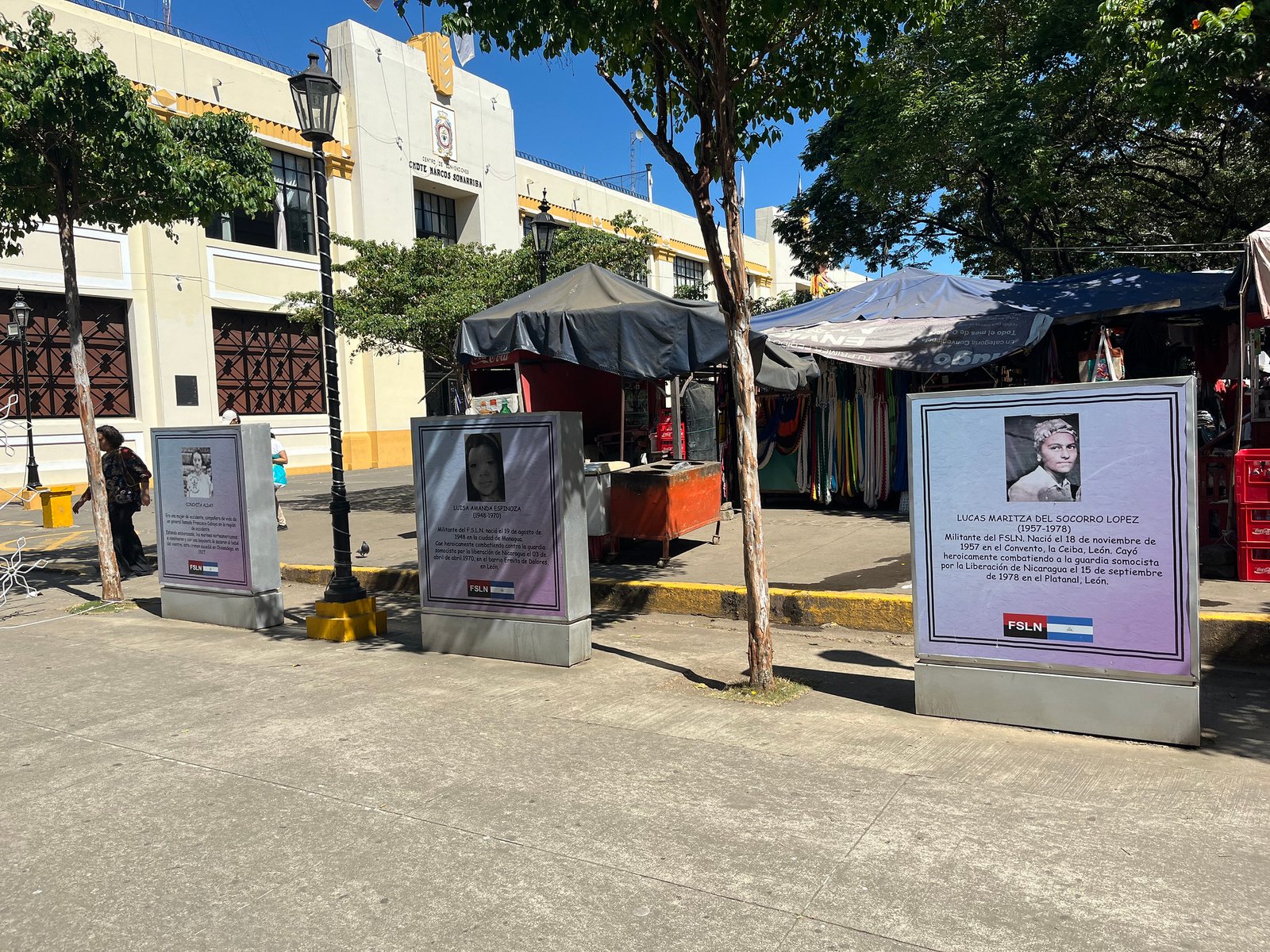
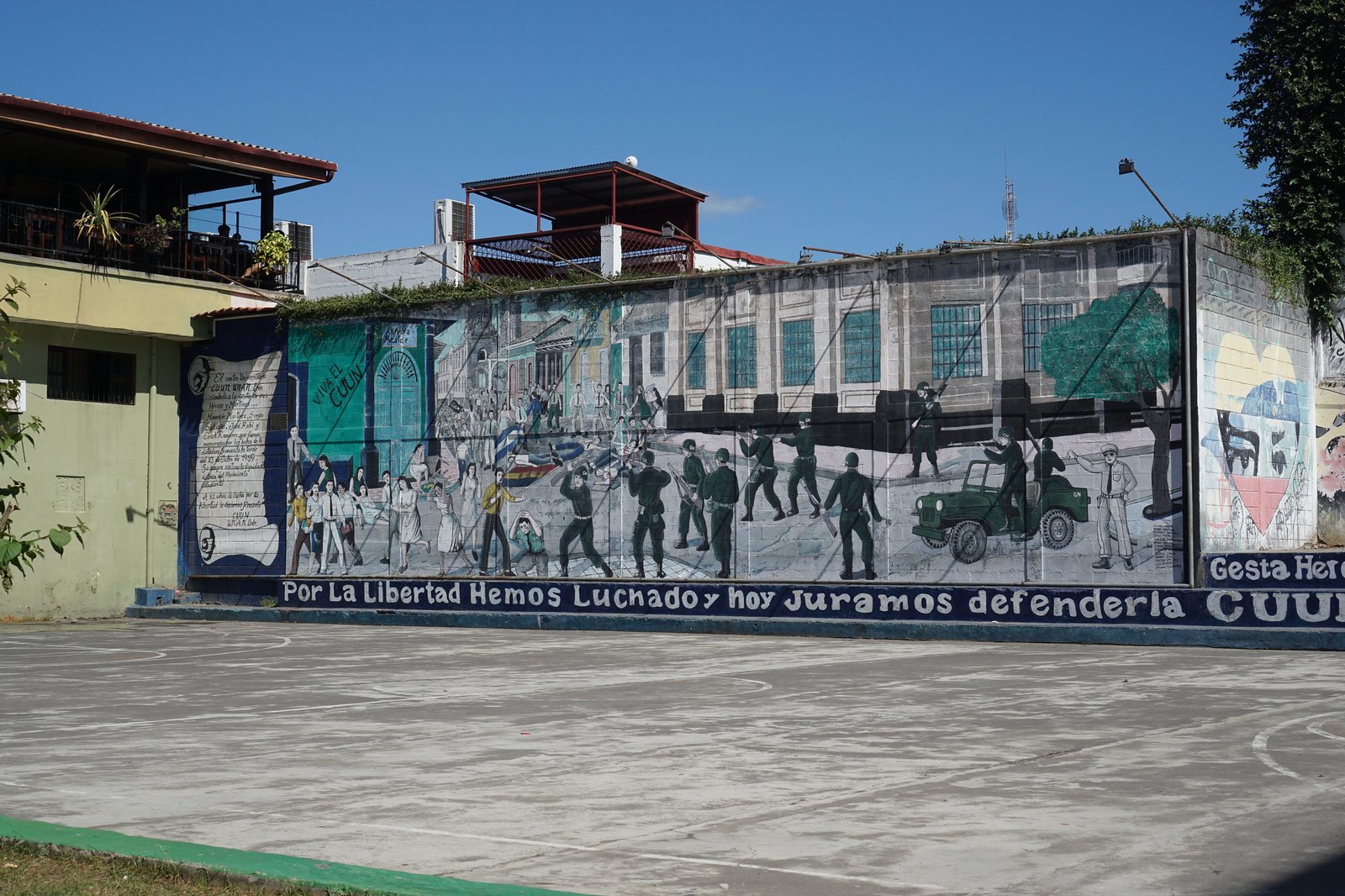
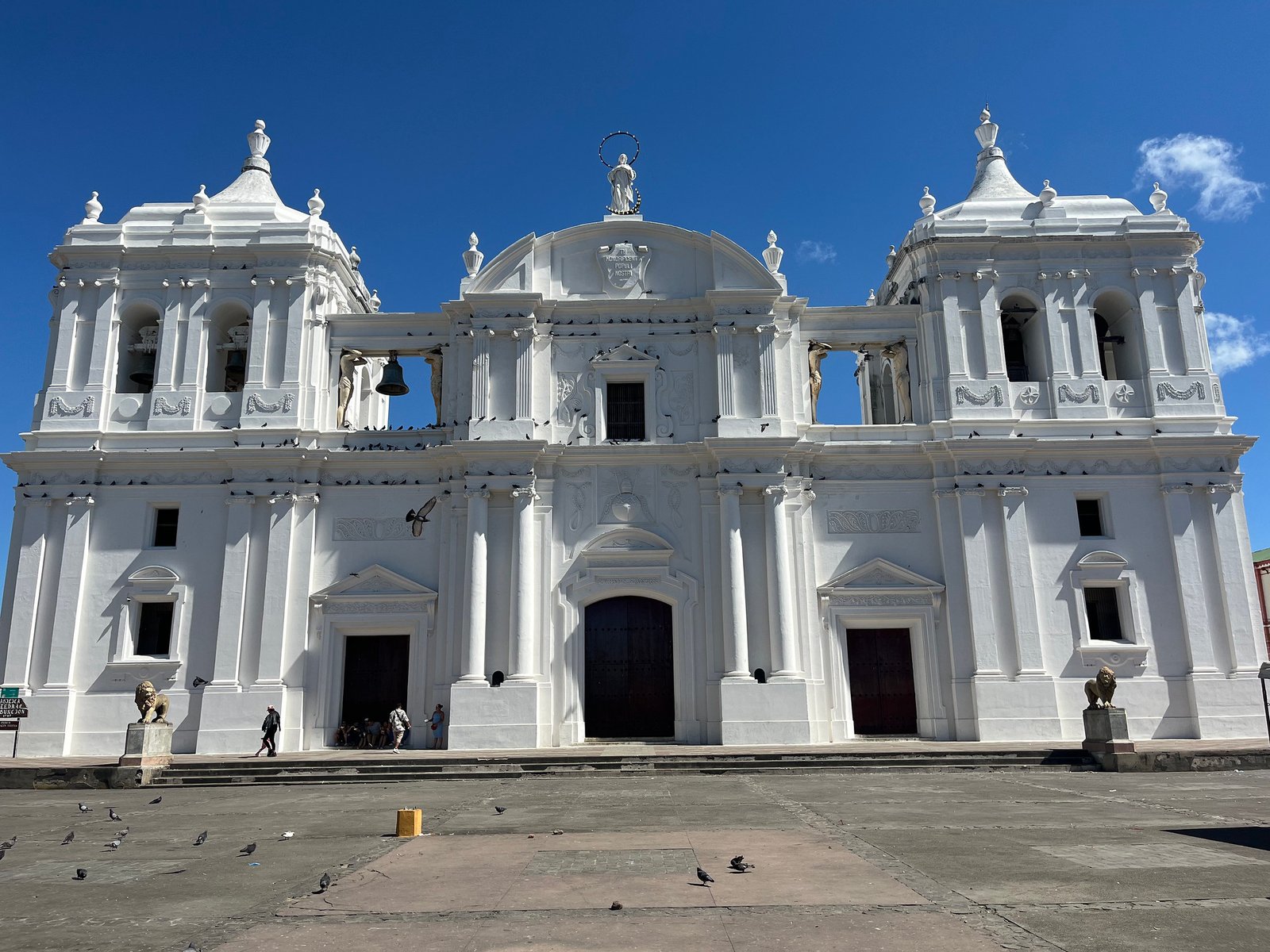

For most people, the most interesting part of the cathedral is its roof, from which views of Leon’s colonial center and nearby volcanoes are simply sublime. When we got to the top, we were asked to remove our shoes and keep the visit to under 30 minutes for crowd control purposes. The roof is a surreal place. Walking barefoot among white-colored towers and cupolas, I felt that I wasn't on the rooftop of a cathedral in Nicaragua but in a whitewashed village somewhere in Greece or Spain. And the views of the surrounding area were indeed commanding.
We didn't spend a night in Leon, choosing instead to stay in the nearby village of Las Peñitas on the Pacific coast, where we could beat the heat by swimming in the ocean. But we were back in Leon one more time to do something that was advertised as “Volcano Day”. And what a day it was!
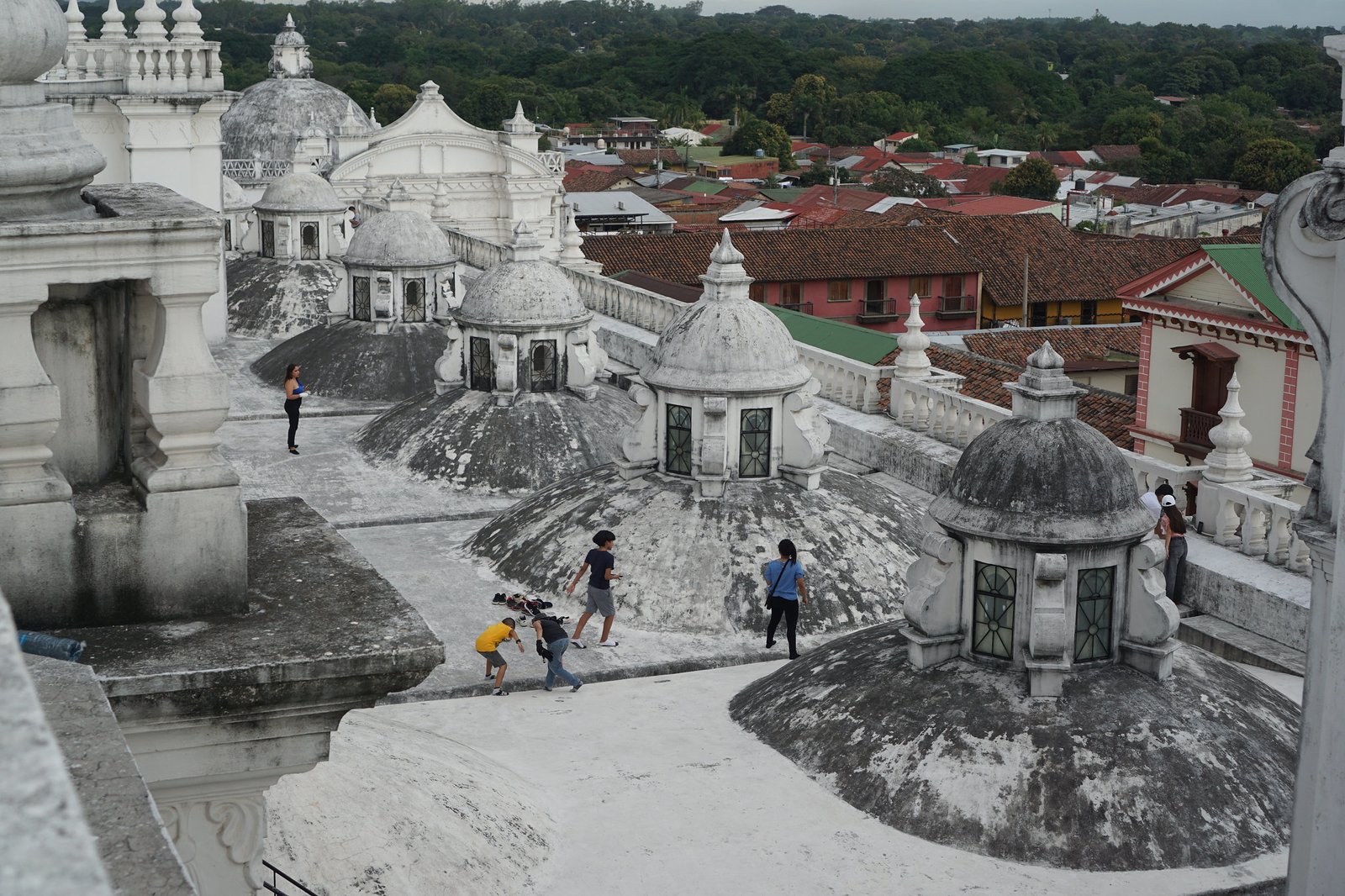
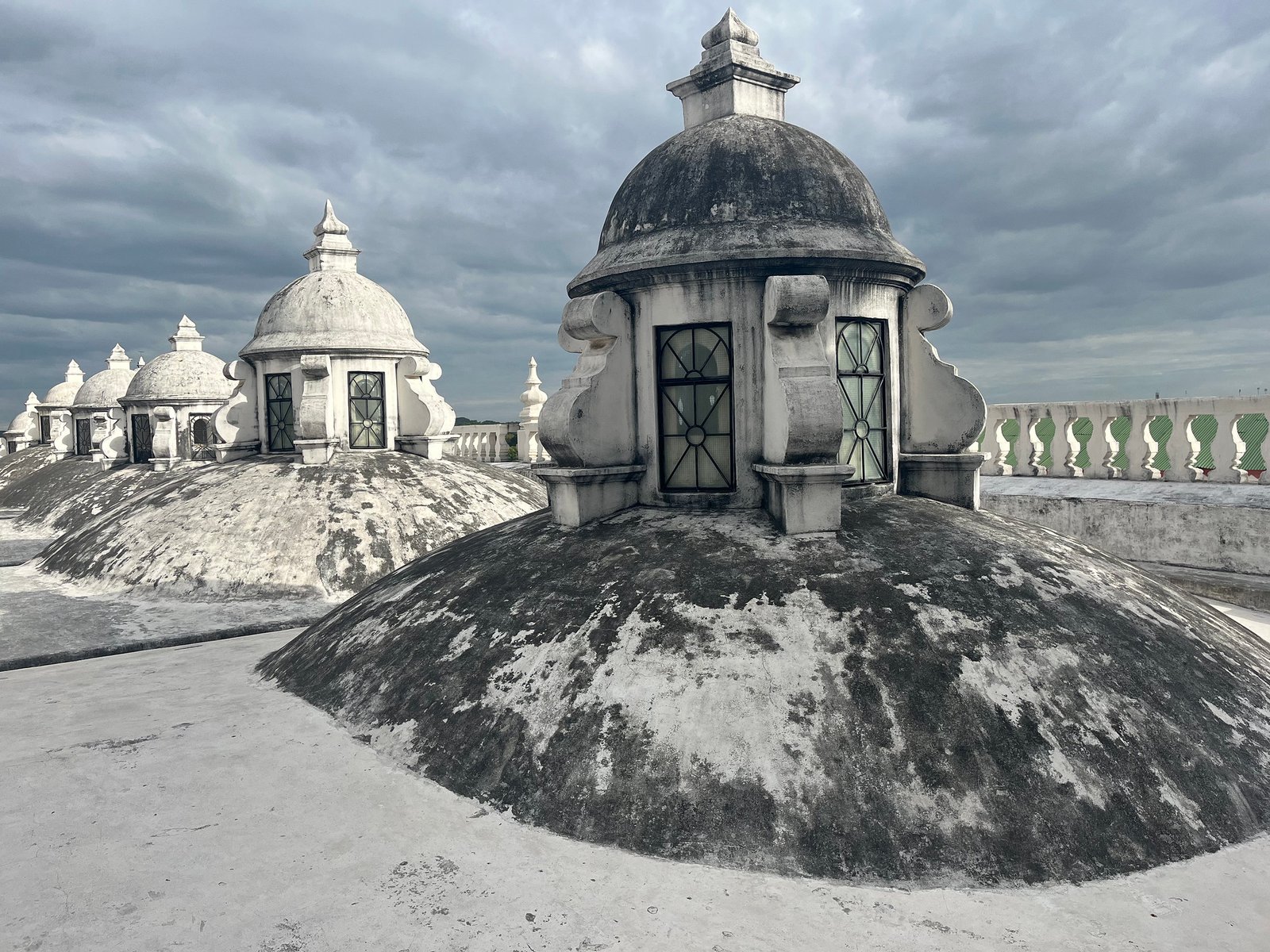
Next week: We slide down the volcano on our butts.
